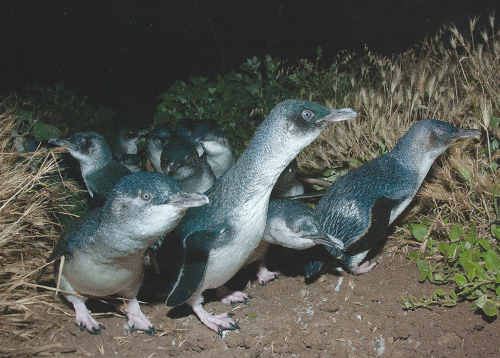Minnesota
has one species of penguin, the Black-footed Penguin. They’re in our
zoos (Minnesota, Como), of course, but this species perhaps could
survive in wild Minnesota.
Except
for our winter. That might sound strange, but of the world’s 18 penguin
species only seven live along the Antarctic shoreline (none are found
in the northern hemisphere). The others live no closer than 750 miles
from that icy coast. Some enjoy locations almost tropical.
The
Black-footed or African penguin lives in south Africa. It has one of
the smallest populations of all penguins, about 25,000 pairs
The
Minnesota Zoo on its web page says, “African Penguins, like most other
penguin species, are endangered in the wild. Oil spills, historical
hunting, and destruction of their habitat have killed 80 percent of the
population in the last 50 years.
“Right
now, the greatest source of their troubles comes from a catastrophic
drop in the number of sardines as a result of overfishing and changing
ocean climate.”
The
situation for the Yellow-eyed Penguin is worse, with fewer than 2,000
breeding pairs, in decline. The Galapagos Penguin also is in trouble. In
2009, when the most recent census for this species was taken, only
1,042 individuals were found.
Penguins, as is the case for so many bird species, often find themselves incompatible with the world as humans have remade it.
Five
species are listed as endangered, including those mentioned above. Six
are listed as vulnerable, four as near-threatened, and three as species
of least concern. The latter includes two of the penguin icons — King,
Chin-strap. Both live in the cold places.
Six penguin species number over one million individuals.
This
all is contained in a beautiful book — “Penguins: the Ultimate Guide,”
by Tui De Roy, Mark Jones, and Julie Cornthwaite, published in the U.S.
by Princeton University Press.
The
book, large enough and with the requisite excellent photos (more than
400), could be considered a coffee-table book. It also is authoritative.
Page through to tour the photos and you will be stopping to read about
what you see. These are fascinating birds.
Consider
the Little Blue Penguin, resident of Australia and New Zealand. No
larger than a crow, it’s nocturnal, nesting in burrows. Hardly your
movie penguin. Troubled by non-native predators, Little Blues in New
Zealand have human friends who restore native vegetation, kill
predators, and even provide nest boxes.
The
book presents status, distribution, habitats, and habits of the 18
species, all mapped to location. The penguins nesting on icy Antarctica
are well-known for their survival ability. The stories the other species
could tell are as interesting, if not as cold.
This
is a bird family well-known in one regard — ice and snow — and pretty
much unknown in another — the variety of species. This book covers very
well the entire family. It would make an excellent holiday gift.
Penguins:
The Ultimate Guide, 240 pages, profusely illustrated with photos by the
authors, detailed information on each species, index, and a guide to
penguin locations, $35.
(Photo, Little Blue Penguins, by the authors, scanned from the book)

source


















No comments:
Post a Comment